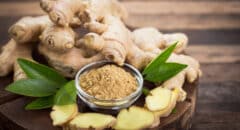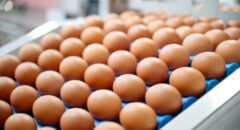
Processed food is often vilified. That’s because most people really don’t understand what processed food is. In fact, you’ll probably be surprised to know that even the most health conscious, natural food enthusiast eats processed food.
According to the United States Department of Agriculture (USDA), processed food is defined as any raw agricultural commodity that has been subject to washing, cleaning, milling, cutting, chopping, heating, pasteurizing, blanching, cooking, canning, freezing, drying, dehydrating, mixing, packaging, or other procedures that alter the food from its natural state.
It’s clear, based on the USDA definition, that not all processed food is equal. In fact, the Academy of Nutrition and Dietetics says processed food falls on a spectrum from minimally to heavily processed:
Minimally processed foods — such as bagged spinach, cut vegetables, and roasted nuts — often are simply pre-prepped for convenience.
Foods processed at their peak to lock in nutritional quality and freshness include canned tomatoes, frozen fruit and vegetables, and canned tuna.
Foods with ingredients added for flavor and texture (sweeteners, spices, oils, colors, and preservatives) include jarred pasta sauce, salad dressing, yogurt, and cake mixes.
Ready-to-eat foods — such as crackers, granola, and deli meat — are more heavily processed.
The most heavily processed foods often are pre-made meals including frozen pizza and microwaveable dinners.
Other health authorities have adopted the NOVA classification which also groups food along a spectrum based on the extent and purpose of the processing they undergo.
Unprocessed or minimally processed foods include foods that have been crushed, dried, pasteurized, frozen or even refrigerated. These processes do not add salt, sugar, oils or fats to the original food. Ideally, unprocessed or minimally processed foods will form the basis of your diet.
Processed culinary ingredients are natural or minimally processed ingredients used in the home or restaurant kitchens to prepare, season and cook home-made dishes such as soups, broths, breads, preserves, salads, drinks, and desserts. Culinary ingredients make your food taste good without making them nutritionally unbalanced.
Processed foods are made by adding sugar, oil, salt or other culinary ingredients which unfavorably change the nutritional composition of the food. Most foods in this group have two or three ingredients.
Examples of processed foods are canned or bottled vegetables, fruit, and legumes: salted or sugared nuts and seeds; salted, cured or smoked meats; canned fish; fruits in syrup; cheeses and unpackaged freshly made bread. NOVA suggest processed foods be used in small amounts as components of culinary preparations or as part of meals that are based on natural or minimally processed foods.
Ultra-processed foods contain the same ingredients used in processed foods. However, they typically have five or more ingredients, including sugar, oils, fats, salt, anti-oxidants, stabilizers, and preservatives.
Ultra-processed foods include carbonated drinks, sweet or savory packaged snacks, store-bought ice-cream, candy, instant noodles, energy bars or energy drinks, instant soups, breakfast cereals, flavored yogurt, chicken nuggets, franks, and fast food burgers. Ultra-processed foods are nutritionally unbalanced and should be avoided.
Consuming processed food is inevitable. However, the choice is yours regarding the type of processed food. Although ultra-processed foods are convenient, and taste good, they should not replace natural or minimally processed foods. The best way to minimize your intake of ultra-processed food is to do more food prep and cooking at home.

Constance Brown-Riggs, is a registered dietitian, certified diabetes educator, national speaker and author of the Diabetes Guide to Enjoying Foods of the World, a convenient guide to help people with diabetes enjoy all the flavors of the world while still following a healthy meal plan. Follow Constance on social media @eatingsoulfully









